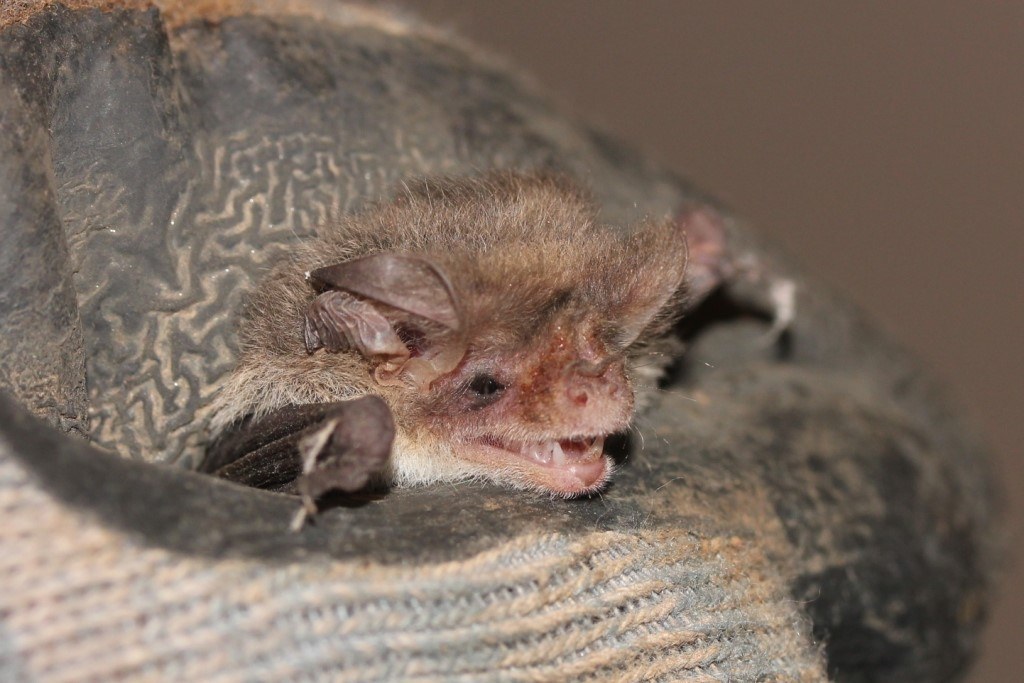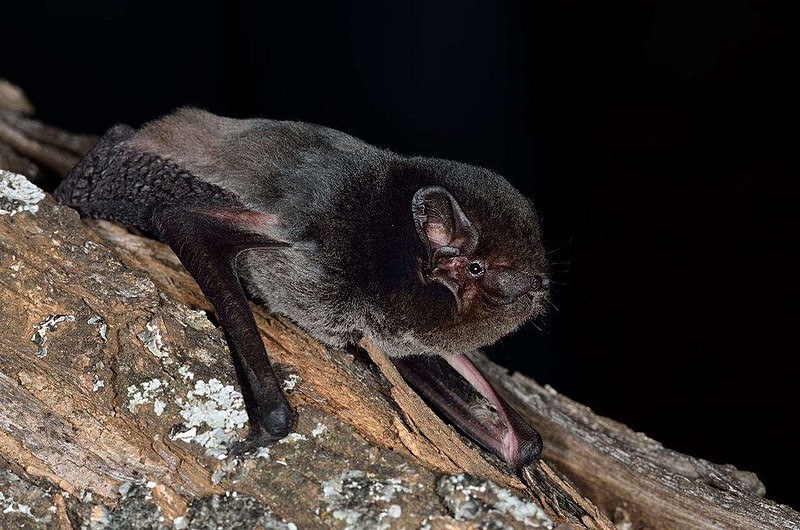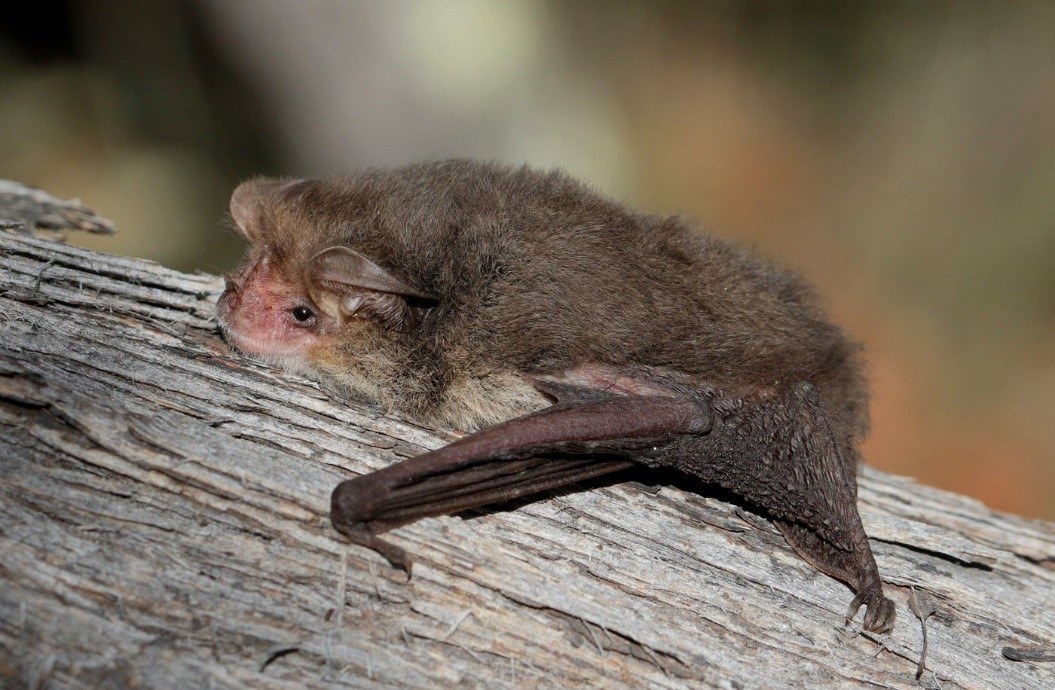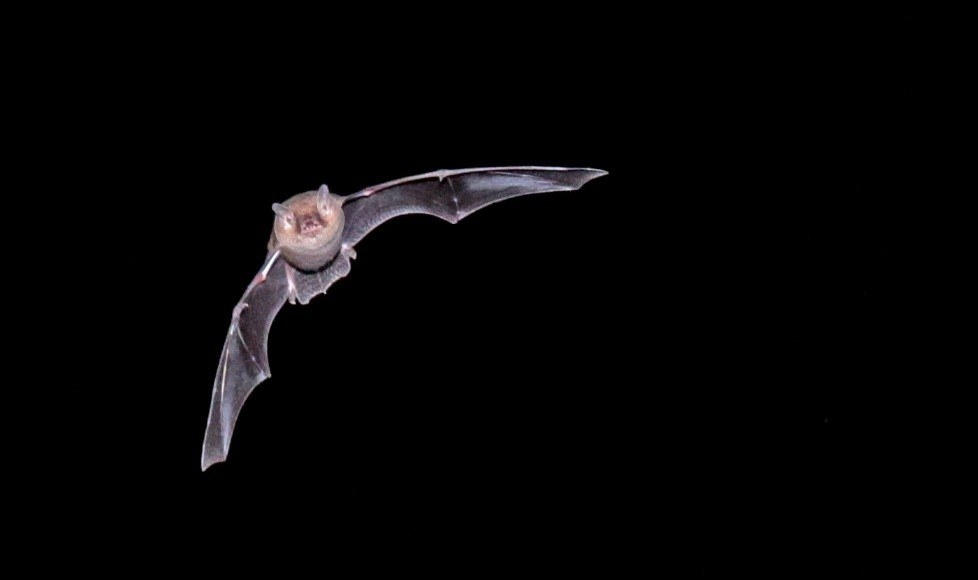Microbats are one of the most common native mammals in metropolitan Adelaide. But what are these little creatures, and why are they so important? Learn more about Adelaide’s microbats.

What is a microbat?
Microbats are tiny bats, weighing between 3 g and 60 g. The bats sleep during the day and they’re happiest when left undisturbed.
These mini mammals are active after dark and are incredibly fast movers.
Their diet consists of insects like moths, midges, cockroaches, crickets, cicadas and mosquitoes – despite their little size, they can eat up to 1000 bugs a night.
When there are lots of bugs during summer and autumn, one microbat can eat up to half its body weight in insects a night!
Microbats are an essential part of the ecosystem as they help keep insect numbers down.
Seeing the world through their ears
Unlike their cousins, the grey-headed flying fox, microbats use both their eyes and their ears to perceive the world.
It is a common misconception that microbats are blind. Actually, they have quite good eyesight, but they make use of their ears, through a process called echolocation, to find their food.
They emit ultrasonic pulses of sound, which bounce back from their prey, helping them to catch food around them.
The sound reflects from surrounding objects to give the bats a clear image of where to head for their meal.
For example, they will call during flight to focus in on prey, repeating their calls while chasing a moth to follow its movements until they get close enough to take a bite.
Very few of these sounds are audible to the human ear as the frequency is too high. If you’re lucky, at night you might hear a white-striped freetail microbat’s calls, which are a ‘tink-tink’ sound.
Each species has its own distinct call pattern and frequency, which is often how species are identified to be in a particular area.
Where do they live?
Microbats make their homes in hollows of trees and branches, or under bark. But there are less of these spots around metropolitan Adelaide due to development.
When they can’t find a suitable place to roost, microbats can squeeze into very small gaps of houses and buildings like roofs, walls and sheds.
What microbats could you find in Adelaide?
The 8 species of microbats you are most likely to find across Adelaide include:

1. White-striped freetail bat
Easily identified by white stripes on the inside of its wings, this is the only microbat in Adelaide whose calls are audible to the human ear, due to its lower frequency.
It has been described as a ‘tink-tink’ sound, or like 2 coins clinking together.
2. Southern forest bat
This is one of Australia’s smallest bats at 4 to 7 g.
Its typical environment is forests and woodlands, but habitat loss has driven this bat to seek out shelter in farms and leafy urban areas.
Females have only one baby a year.

3. Gould’s wattled bat
One of the most common microbats in the Adelaide metro area, this tiny guy is called a wattled bat due to the lobe (wattle) of skin in the corner of its mouth.
With a black furred head and brown body, these bats roost in tree hollows or occasionally in ceilings and basements, and the mothers generally give birth to twins.
Their favourite foods are caterpillars, crickets and moths.

4. Lesser long-eared bat
Lesser long-eared bats have long ears with a ribbing pattern, and can be seen at night around street lights, swooping to catch their prey while flying.
Don’t be surprised if you see them in strange places – these resourceful bats can roost in unused roller doors, canvas awnings and hollow walls.
5. Large forest bat
Don’t be fooled by the name – these bats are about the size of your thumb and weigh just 5 to 8 g.
Colonies of up to 60 large forest bats may nest in eucalyptus hollows, commonly in the foothills and outskirts of Adelaide.
They love the taste of flies, termites, spiders and ants.
6. Chocolate wattled bat
These tiny critters have special tendons in their legs to hang upside-down, which means they can’t stand on their hind legs at all.
They weigh in at a maximum of 11 g and like to go to sleep in tree hollows – though they’ve been known to take over abandoned birds’ nests.

7. Little forest bat
Found in the Adelaide Hills, these folks are the smallest of the forest bats at 3 to 6 g, and like to nest in decayed timber and eucalyptus hollows.
Extremely agile flyers, they often twist and turn through the air when chasing their favourite dinner – mosquitos.
They have been known to nest with possums.
8. Southern freetail bat
These are one of the most common microbats in Adelaide.
They grow up to 15 g and have an extended bony tail.
They forage for bugs, beetles and moths above the canopies of trees.

Getting to know our tiny friends
Work is underway to better understand where different species of microbats are hanging out across the various habitat types around metropolitan Adelaide.
Our ecologists at Green Adelaide are surveying microbats using Anabat recorders (acoustic monitoring devices), which pick up the high-pitched calls of the bats.
Using this technology, we can tell what species of bats are in what areas. This research is underway from Angle Vale in the north, to Sellicks Hill in the south.
Learning the behaviour of these insect-munching mammals is important. It’s another way we are learning to better live with our native wildlife by understanding how they use urban areas, and then working out how we can best share metropolitan Adelaide with them.
How can I help look after microbats?
Here’s 4 ways you can help look after Adelaide’s population of microbats:
- Minimise your use of insecticides – instead rely on microbats for pest control.
- Plant more locally native species such as those from native plant nurseries.
- Protect mature trees – their hollows provide valuable habitat.
- Install a roost box in your yard so microbats have more home options.
Remember, if you see an unwell bat on the ground, it is best not to touch them. All bat species, including microbats, are potential carriers of disease – it is rare, but possible.
Instead, call a rescue organisation such as Fauna Rescue on 8486 1139 or Bat Rescue SA on 0475 132 093 for help. For more health information visit the SA Health website.
You can also discover more about Adelaide's bats, including grey-headed flying foxes.
This blog was originally published in April of 2023.